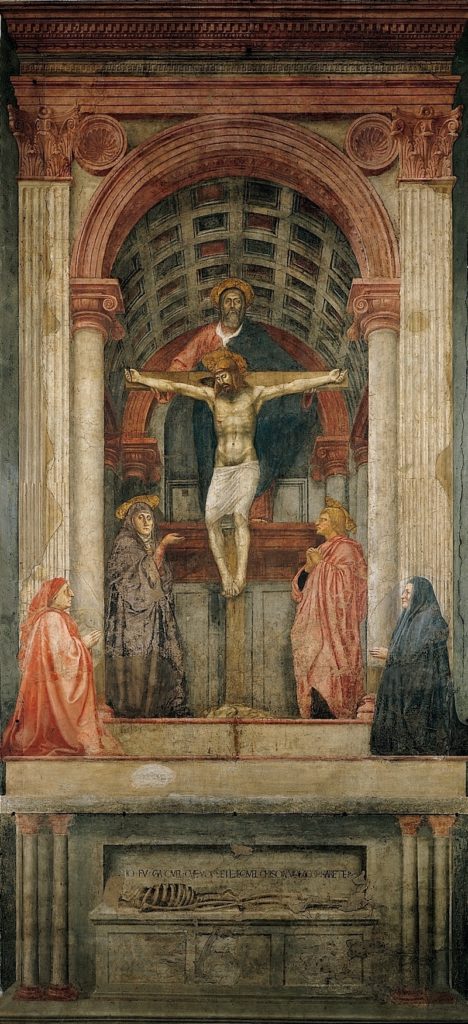Oblate Father Ronald Rolheiser is among the most respected and prolific writers on Christian spirituality. Though I have never met him, I have profited from his keen insights and captivating stories. In particular, I am indebted to two of his books: The Holy Longing (which I used with undergraduates) and Sacred Fire: A Vision for a Deeper Human and Christian Maturity.
However, a recent article of his, “When Does Faith Disappear?,” left me uneasy. It appears to reflect a trend in theology and spirituality (the two, of course, are inseparable) that is well meaning, but ultimately misleading.
It begins with alarming statistics. Not only has there been a precipitous decline in recent decades in the number of people who go to church regularly. There has been “an equally unprecedented spike in the number of people who claim to have lost their faith completely.” The latter add to the swelling ranks of so-called “Nones,” people without any religious affiliation. In the United States and Canada, “Nones” now comprise over 30 percent of the population!
But have many of them really lost their faith? Rolheiser offers a distinction that has become widespread in contemporary Catholic theology: he distinguishes “faith” and “beliefs.” He asks provocatively: “is ceasing to believe in something the same thing as losing one’s faith?” And responds, equally provocatively, “not necessarily.”
To unpack this assertion, Rolheiser turns to what is traditionally called the “apophatic” dimension of Christian theology and spirituality. He rightly declares: “God is beyond all conceptualization, beyond all imaginings, beyond being pictured and beyond being captured in any adequate way by language.”
In many ways, this recovery of the “apophatic” recalls what the Fathers of the Church and Thomas Aquinas affirmed. Recall Saint Augustine’s si comprehendis, non est Deus – “if you [presume to] grasp, it is not God.” A salutary rebuke to a too rationalistic appeal to propositions, as though they adequately circumscribed the content of faith. Karl Rahner’s insistence on the “mystagogic” nature of dogmatic statements was, therefore, a welcome counter to neo-scholastic overreaching (whatever else may be said of his work).

But I suggest the pendulum has now swung far in the opposite direction. We risk an equally unsatisfactory spurning of propositions. The danger is what I term “an empty apophaticism.” “Faith” with no distinctive and discernible content. This, unfortunately, abets the “I’m spiritual, but not religious” posture. Propositions can never fully articulate the Mystery, but they can point us in the direction where true Mystery lies and provide insight into its character.
Saint Paul insists that “eye has not seen, nor ear heard, nor the human heart conceived, what God has prepared for those who love him.” (1 Cor 2:9). That’s “apophatic.” But he immediately adds “these things God has revealed to us through the Spirit.” (1Cor 2:10)
Revelation is the rub! Christian faith is the loving response to God’s love revealed in Jesus Christ. Revelation perforce comes to expression in propositions, articles of belief: “that Christ died for our sins in accordance with the scriptures, that he was buried, that he was raised on the third day in accordance with the scriptures, that he appeared to Cephas, then to the twelve.” (1 Cor 15:3-5)
Statements of belief articulate the “cataphatic” dimension of revelation, its positive content. Without this dimension, Christian faith is empty and void. As Louis Dupré writes: “If we can assert nothing about God, then we can say nothing to God – and that marks the end of religion.”
I agree with Father Rolheiser that “many articles within our Christian creed. . .are images and words that point us towards something we cannot imagine because it is beyond imagination.” They are “mystagogic.” But pastors are called to be “mystagogues:” to probe wisely and reverently the Mystery of the faith. They are commissioned, according to their ability, to rekindle the religious imagination, to embrace the via pulchritudinis – the way of beauty – extolled by Pope Francis in Evangelii Gaudium. They ponder, with their people, the great truths of the faith, calling upon poets and artists for assistance.
An example: Rolheiser asks, “How can God, who is one, be three? This isn’t mathematics, it’s mystery, something that cannot be imaginatively circumscribed.” Yes, certainly. But ought it not be imaginatively evoked? As John Donne put it:
Batter my heart, three-person’d God, for you
As yet but knock, breathe, shine, and seek to mend;
That I might rise and stand, o’erthrow me, and bend
Your force to break blow, burn, and make me new.
We might then suggest, conceptually now, but still imaginatively, that the “three-personed God” bespeaks the fullness of personhood, the fullness of life-giving relations. That we, made in the image of this God, are not yet fully what God intends us to be. That we are called to grow, through grace, more and more into God’s likeness, to become sharers in the very life of the three-personed God.
The completed created likeness of the Trinity is the communion of saints: relationships redeemed and transfigured.
Dante is the supreme poet of the Catholic Tradition, the paladin of the Catholic imagination. The terza rima of the Divine Comedy attunes our every movement to the rhythm of Trinitarian life. And the deifying vision to which he and we are destined is the vision of the Triune God.
But such vision is never individualistic; it is fully personal and transpires only in communion. As Dante, draws close to his journey’s culmination, he sees more and more clearly that relationships, founded and transformed in Love, truly mirror the blessed Trinity. Not celestial mathematics; but wondrous mystery.
Because Christian faith is, of its essence, Trinitarian, there can be no dichotomy between faith and belief. Christian faith is not formless; its “logic” is Trinitarian. Indeed, the primacy of the cataphatic dimension in Christian theology and spirituality is on full display each time we begin our prayer by signing ourselves: “In the Name of the Father and of the Son and of the Holy Spirit.”















